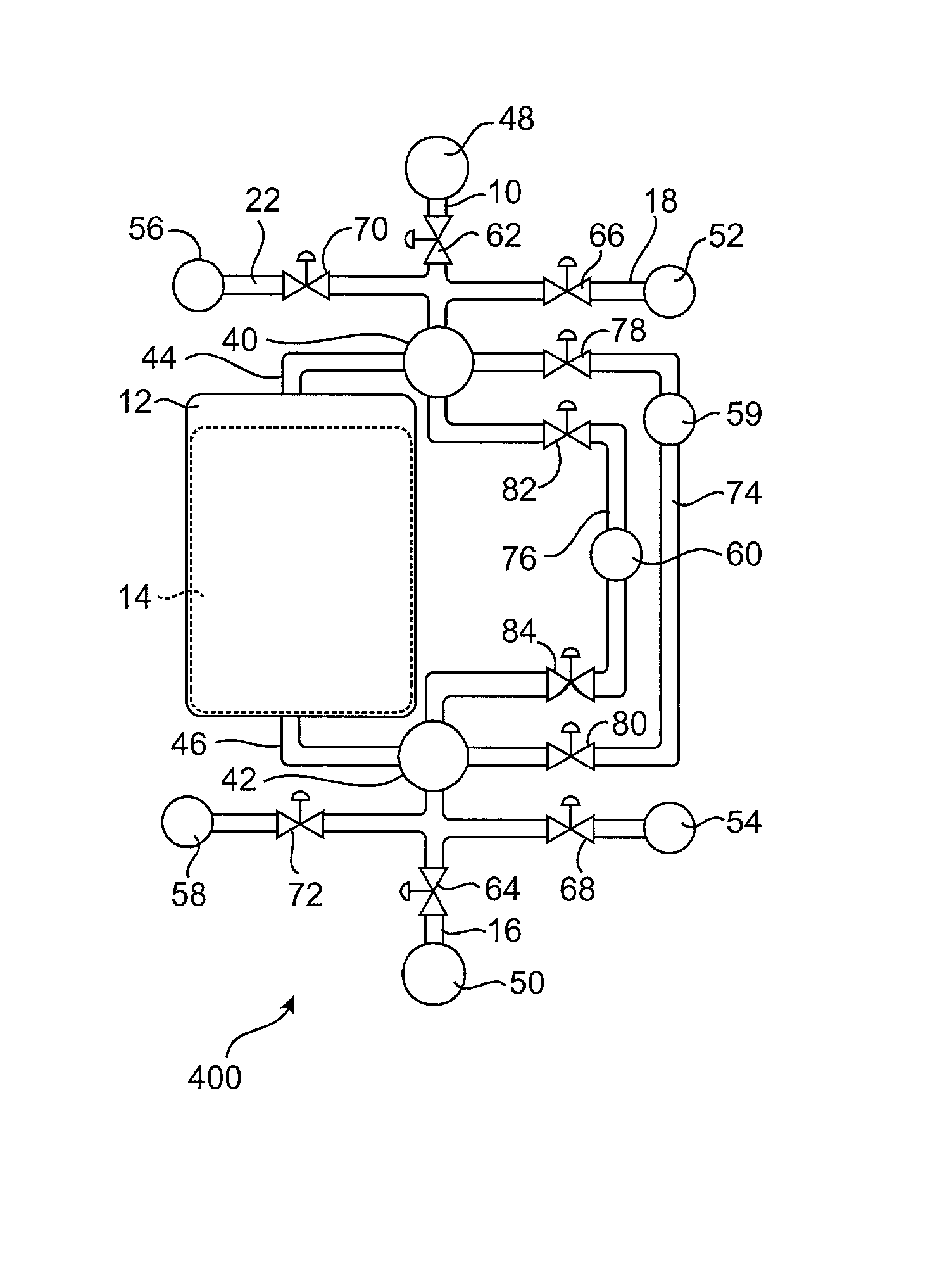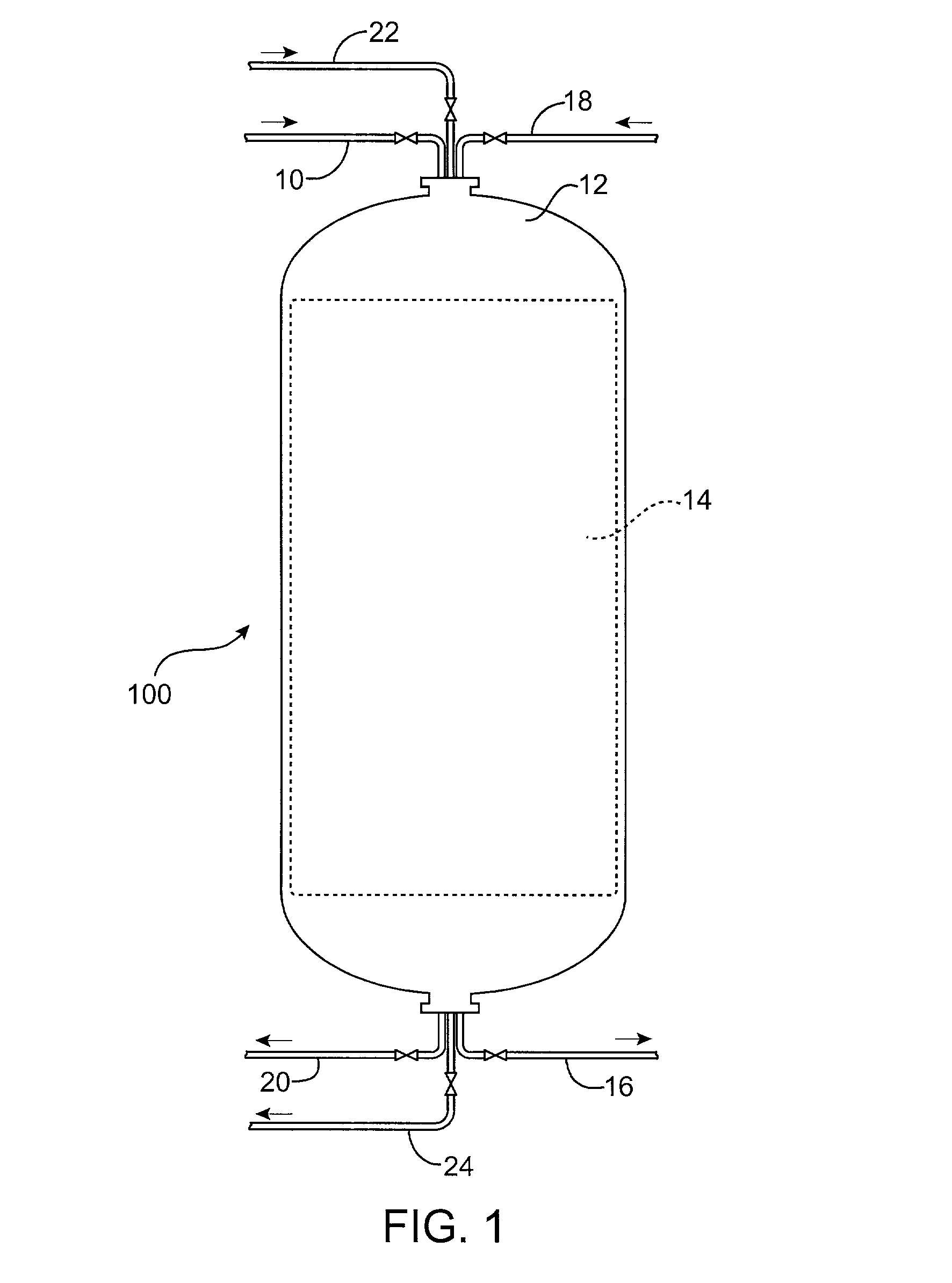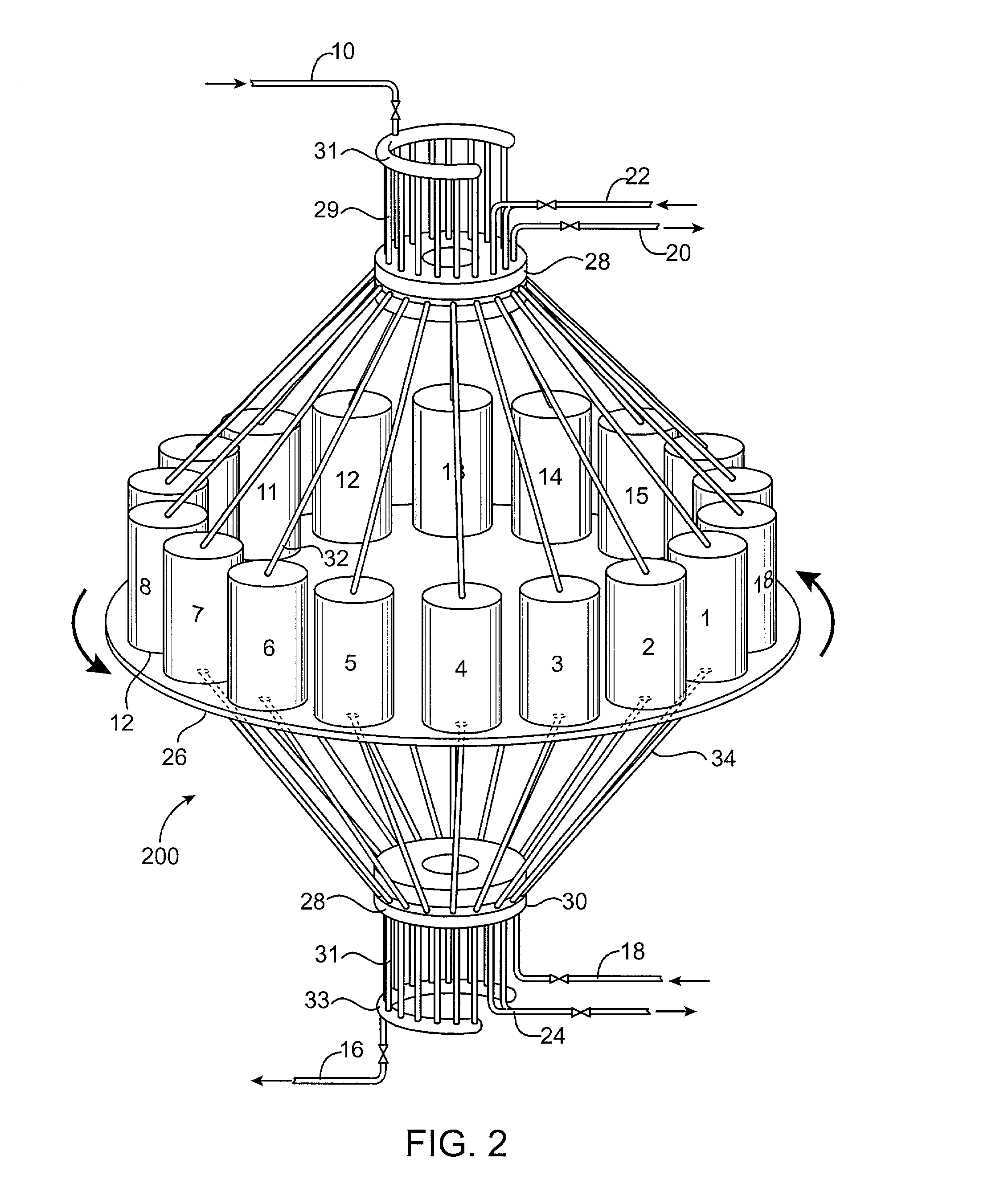High efficiency ion exchange system for removing contaminants from water
- Summary
- Abstract
- Description
- Claims
- Application Information
AI Technical Summary
Benefits of technology
Problems solved by technology
Method used
Image
Examples
first embodiment
[0091] the overall system of the invention is shown in FIG. 7 as system 700. System 700 includes eighteen vessels 12-1 through 12-18, where eighteen is a representative number in the range of ten to twenty-five or greater. Each vessel is numbered with an identifier "1", "2" . . . "18" to identify its unique position in the overall system. Each vessel is configured for cocurrent flow of treatment water and regenerant essentially as set out in FIG. 5 and is equipped with headers, manifolds, lines and valves as described with reference to FIGS. 4 and 5. These elements are numbered in accord with the numbering used in FIGS. 4 and 5 with an added indication if a particular element is associated with a particular vessel. For example, header "40-1" is the "40" header associated with vessel 1.
[0092] Each of the eighteen vessels contains a bed of ion exchange resin and each has a header 40-1, etc which provides access to the vessel and to contaminated water supplied by feed manifold 48, via ...
second embodiment
[0105] the overall system of the invention is shown in FIG. 8 as system 800. System 800 includes sixteen vessels 12-1 through 12-16. The numbering of elements of the process is in accord with the numbering used with FIG. 7. Contaminated water is feeding through the resin beds in vessels 12-1 through 12-13. Purified water is being withdrawn from these thirteen vessels through headers 42-1 and valve 64-1, etc and collected in manifold 50 for use. Again, valves 64-1 through 64-13 all are shown with a dot to show a positive fluid flow.
[0106] Vessels 12-14 through 12-16 are not in service purifying water. The resin beds in vessels 12-15 and 16 are undergoing regeneration with a brine solution and the bed in vessel 12-14 is being rinsed to remove spent brine prior to being returned to service. As noted above, this regeneration could be carried out with substantial volumes of regenerant and rinse going to waste. It could also be carried out with substantially reduced waste, for example as ...
example 1
[0157] Nitrate Removal
[0158] This example shows the removal of nitrate ion from a ground water source as practiced on a continuous, pilot scale basis. A representative analysis of the feed water showed the following:
1 Typical Actual nitrate 45-200 mg / L 52 chloride 35-200 mg / L 44 sulfate 0-300 mg / L 100 bicarbonate 60-200 mg / L 98
[0159] The product water contained on average 6 mg / L of nitrate and less than 1 mg / L of sulfate.
[0160] The feed water was fed into a purification system substantially as shown in FIG. 7 as 700. Sixteen to eighteen vessels were used at various times during the run. Each vessel was 36 inches in diameter by 48 inches high. Each contained about 25 ft..sup.3 of an ion exchange resin. Commercial strong base type I an ion exchange resin having a DVB cross-linked polystyrene matrix and type I quaternary ammonium functional groups was used. This resin was in the form of beds of typical resin bed size {fraction (1 / 16)}-{fraction (1 / 64)} inch diameter. These vessels were...
PUM
| Property | Measurement | Unit |
|---|---|---|
| Fraction | aaaaa | aaaaa |
| Density | aaaaa | aaaaa |
| Density | aaaaa | aaaaa |
Abstract
Description
Claims
Application Information
 Login to View More
Login to View More - R&D
- Intellectual Property
- Life Sciences
- Materials
- Tech Scout
- Unparalleled Data Quality
- Higher Quality Content
- 60% Fewer Hallucinations
Browse by: Latest US Patents, China's latest patents, Technical Efficacy Thesaurus, Application Domain, Technology Topic, Popular Technical Reports.
© 2025 PatSnap. All rights reserved.Legal|Privacy policy|Modern Slavery Act Transparency Statement|Sitemap|About US| Contact US: help@patsnap.com



